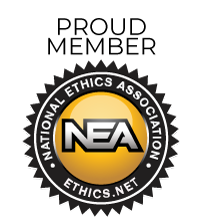3 Financial Developments to be Thankful for in 2020
This year has been a rollercoaster ride. COVID has dominated the headlines and impacted every aspect of our lives. It has shut down businesses, schools, and workplaces. It’s changed the way we interact and socialize. And of course, it has deeply impacted the economy and the financial markets.
It can be hard in 2020 to find the good news, but there actually are a few economic developments for which we can be grateful. There’s also quite a bit of uncertainty ahead of us. As we approach the end of 2020, now may be a good time to reflect on what has transpired over the past 11 months, and what steps you may need to take to prepare for what comes next.
Below are three positive developments that you may want to consider as you prepare for 2021:
The Markets Rebound
COVID ended the longest bull market and longest economic expansion in history. The previous bull market started in 2009 and lasted for nearly a decade before crashing in just a few short weeks over February and January of this year.1
Between February 19 and March 23, the S&P 500 fell 33.93%. Since that point, though, the markets have surged. From March 23 through October 29, the S&P 500 is up 47.94% and is nearly back to its pre-COVID levels.2
As mentioned, though, there is still uncertainty ahead. The COVID pandemic is far from over. There’s also uncertainty about how the results of the election will impact the markets, the economy, and the country’s COVID response.
While the market's rebound is a fortunate turn of events, there’s no guarantee that it will continue. Now is a good time to evaluate your strategy and lock-in any gains before another potential downturn occurs. A financial professional can help you explore options.
GDP Surge
In the second quarter, GDP fell by 31.4%, the largest quarterly drop in history. In the third quarter, it rebounded by 33.1%, the largest quarterly gain in history. That number easily beat the previous record of 16.7% in the third quarter of 1950.3
Much of the rebound was driven by the service industry and the reopening of much of the economy. Of course, the continuing rise in COVID cases may threaten the economic rebound. Twenty-nine states hit record levels for daily new cases in October. Forty states had an increase of 10% just in the last week of October.4
CARES Act Financial Flexibility
The COVID pandemic and its economic fallout have created financial challenges for millions of Americans. While the government is still debating a second round of stimulus, the first round, known as the CARES Act, continues to provide financial flexibility for those facing difficulties.
As part of the CARES Act, you can withdraw up to $100,000 from your 401(k) or IRA without facing early distribution penalties. The taxes on the distribution can even be spread out over a three-year period.5
Granted, withdrawing money from your 401(k) or IRA isn’t the best strategy for your retirement. However, it is an added measure of flexibility that didn’t exist prior to this year and it could be a blessing if you’re struggling due to the COVID pandemic.
The end of 2020 is approaching. It’s been a rollercoaster ride, but there have been some positive developments, especially in the second half of the year. Let’s talk about how to protect what you have and limit your exposure to future risk and uncertainty. Contact us today at Retirement Advisers Net and let’s start the conversation.
2 https://www.google.com/finance/quote/.INX:INDEXSP
3 https://www.cnbc.com/2020/10/29/us-gdp-report-third-quarter-2020.html
4 https://www.cnn.com/2020/10/28/health/us-coronavirus-wednesday/index.html
5 https://www.irs.gov/newsroom/coronavirus-related-relief-for-retirement-plans-and-iras-questions-and-answers
Licensed Insurance Professional. This information is designed to provide a general overview with regard to the subject matter covered and is not state specific. The authors, publisher and host are not providing legal, accounting or specific advice for your situation. By providing your information, you give consent to be contacted about the possible sale of an insurance or annuity product. This information has been provided by a Licensed Insurance Professional and does not necessarily represent the views of the presenting insurance professional. The statements and opinions expressed are those of the author and are subject to change at any time. All information is believed to be from reliable sources; however, presenting insurance professional makes no representation as to its completeness or accuracy. This material has been prepared for informational and educational purposes only. It is not intended to provide, and should not be relied upon for, accounting, legal, tax or investment advice. This information has been provided by a Licensed Insurance Professional and is not sponsored or endorsed by the Social Security Administration or any government agency.




